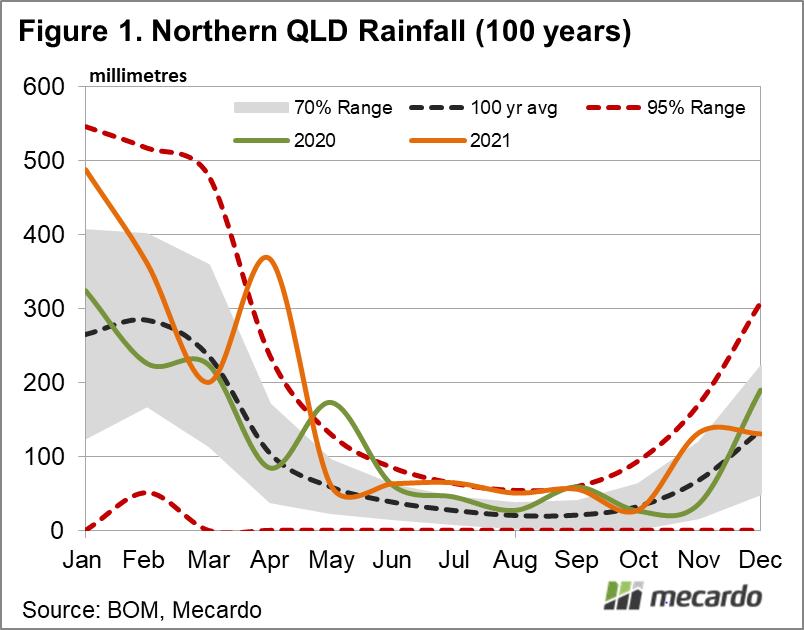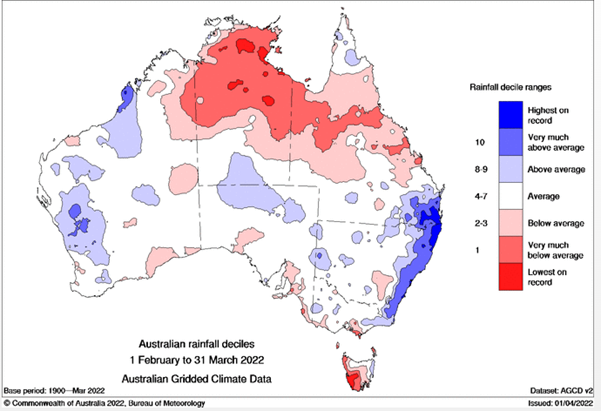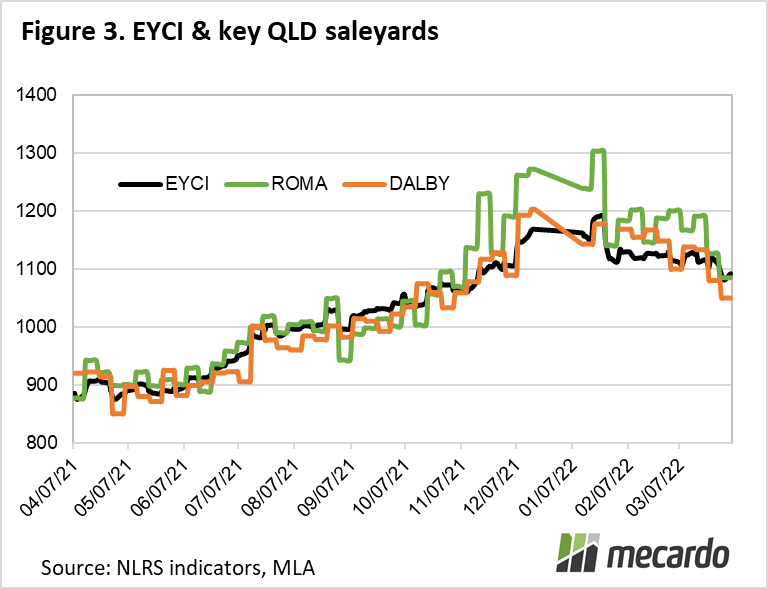Reports are emerging that low rainfall in northern Australia over the past two months has caused an early release of cattle supply into saleyards further south, putting pressure on prices.
The lion’s share of rainfall that falls in northern Australia is during the rainy monsoon season between December and April. (figure 1)
Data from the Australian Bureau of Meteorology (BOM) reveals that for the period 01/02 to March 31, 2022, rainfall in Northern Australia has been extremely low historically speaking. (figure 2)
Far north and central QLD has clocked in decile 1-3, placing the sum of rainfall received as well below average. More disturbingly, the NT, from Tennant creek upwards has recorded rainfall in the bottom 10% of recorded history, to the lowest ever seen for the same comparable period.
To put this into perspective in terms of actual precipitation , 30th percentile rainfall still equates to 300-800mm rainfall over the impacted areas, while median rainfall clocks in at 400mm plus.
The lowest on record rainfall for much of the east coast of northern QLD comes in at 100-300mm.
The result has been that agents and MLA reporters at QLD’s keystone cattle saleyard, Roma Store, are reporting that cattle heralding form the far north of QLD and the Northern Territory have begun to flow into QLD markets at an earlier date than usual as producers begin turning off cattle ahead of poorer pastoral conditions taking hold. Typically, mustering does not take place in earnest till well after Easter.
MLA NLRS reporter Trevor Hess commented that cattle coming to market in Roma Store were drawn from a wide area, including the western regions and even Alice springs. NLRS’ David Monk also remarks that large lines of cattle from far western QLD are being turned off in Dalby also.
Nutrien Ag solutions Agent Rod Turner observes that the quality of heavy feeder cattle been yarded has been a factor that has impacted prices, and that weakness in live export markets is an additional driver for the marketing of northern cattle.
With supply increasing from an unseasonal source, prices for lower quality cattle have been suppressed due to insufficient demand to soak up the additional cattle. However, a common theme linking all the reports from people in the yards was that demand for top examples remained firm and attracted good prices.
Since mid-March, the EYCI has slipped 3%, while prices in the key northern saleyards of Roma and Dalby have dropped 8-9% in contrast. (figure 3)
What does it mean?
Northern QLD and the NT have evidently missed out on the best of the wet season this year, and with moisture profiles impacted, stocking capacity will be reduced throughout the dry season. A premature flow of cattle east and south can be expected, which has potential to put downward pressure on prices. That said, demand for quality cattle remains robust, and that theme may be sustained.
Have any questions or comments?
Key Points
- Far north & central QLD have received well below average rainfall this year, with parts of the NT falling in the lowest decile for the same period.
- Historically low rainfall in the far north, see’s early release of cattle to the south.
- Increase in supply putting some pressure on prices, EYCI has slipped 3% since mid-March, but demand for quality cattle remains solid.
*Figure 1
*Figure 2
*Figure 3
Data sources: MLA, Mecardo




